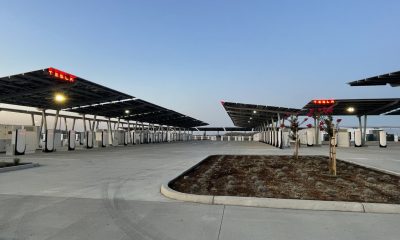Tesla Model S
Comparing Tesla battery technology against the competition
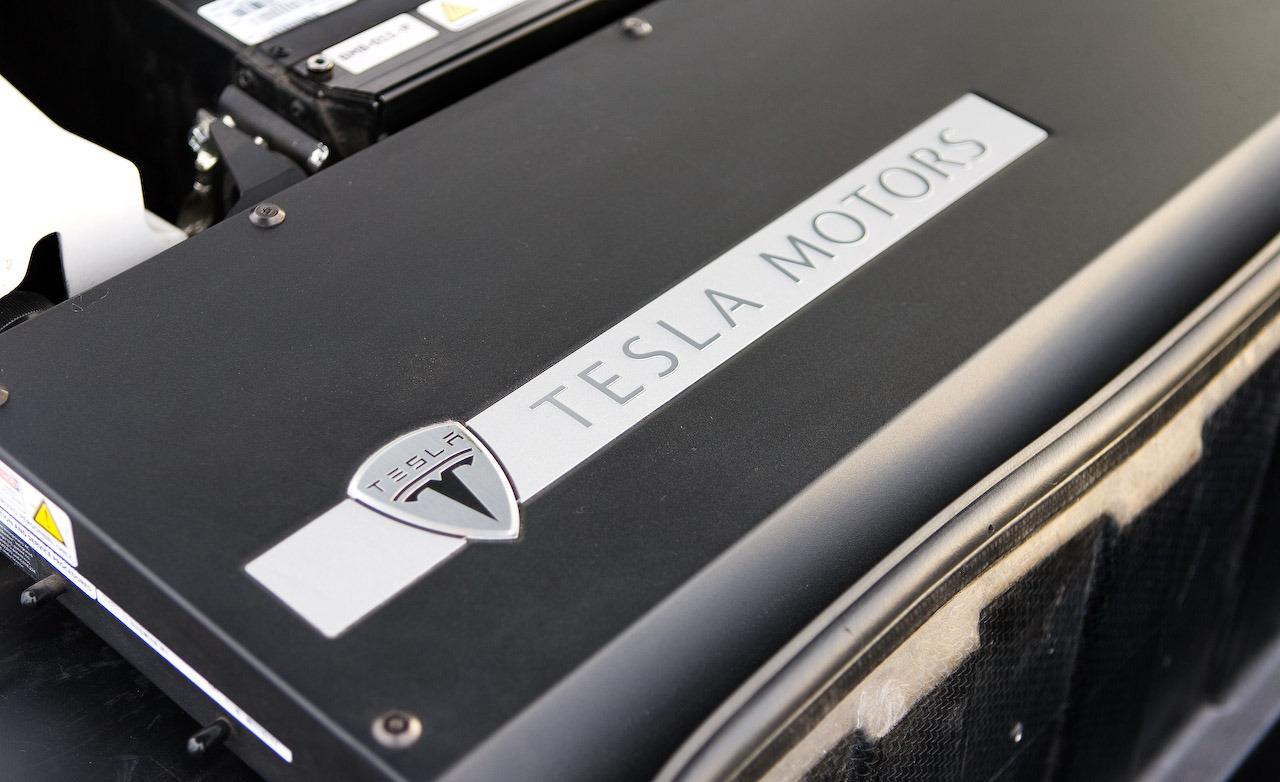
I bought my Model S for many reasons, but battery efficiency was not one of them. The question of whether Tesla battery technology is really better than the competition has been weighing heavy on my mind so I set out to try and find some definitive answers.
BEV Competitive Landscape
I started by making a list of only 100% electric cars, what people call Battery Electric Vehicles (BEVs). I wanted to cut out the hybrids and other types as their batteries would be smaller and they would be less dependent on the quality of the battery. I ended up with 10 cars in my list. All the cars in the list use Lithium-ion batteries reported to have the highest energy and power density combined of any energy-storage medium. Each vendor uses various methodologies to achieve the best efficiency and performance, not limited to lay out of the batteries, heating and cooling as well as how charge min and max charge levels are controlled.
Next I used a number of online sources to collect the basic information on battery size, EPA range, MPGe rating, max charge rate, etc and came up with the following list:
Note: the RAV4 EV had a Tesla-provided battery pack. The car and pack arrangement have ended production.
Initial BEV Battery & Range Analysis
One thing that immediately jumps out is that all the EPA range per kWh results look somewhat similar. The worst is the RAV-4 but the others are all within 30% of the best, the Tesla Roadster. In second place is the Smart Electric Drive. Some other things stand out from this data:
- The Tesla Roadster, with its low weight and relatively large battery, is much more efficient than the Model S and was the most efficient car in this group.
- Second place in miles/kWh is the Smart Electric Drive. Another low weight small car — Smaller, lighter cars lead the pack on miles/kWh efficiency.
- No surprise to anyone, the Tesla’s all have the largest batteries and furthest range of any EV.
- Also not a surprise, battery size directly correlates with range.
- The Model S is not the most efficient car in terms of converting kWh to miles driven.
- The Model S is also not the most efficient car in terms of MPGe ratings.
- The larger the battery, the larger the charge rate the vendor seems (needs?) to support.
- Tesla has the largest battery packs on the market, at least 2x any competitor.
From this data it seems that Tesla has an edge in size and/or charge rate but not efficiency (the way it’s measured in the chart). But I suspect there is more to it than this so I ended up digging deeper to uncover some more data.
Deep-dive Analysis
The amount of passenger and cargo weight you’re able to move with those kWh used is not clearly outlined in the competitive analysis. You can make an extremely efficient electric bike but its not very practical for moving your family around or hauling groceries. What does the data look like if you try to account for weight or cargo capacity?
With this additional data we start to see different leaders emerge. The larger batteries add a lot of extra weight of their own, but even with that, the Model S is more efficient at moving a pound of weight over a mile per kWh than any other EV. Other vendors aren’t too far off with the Ford Focus Electric in second place followed closely by the Mercedes B-Class.
Moving weight around is useful, but that needs to translate into utility. Looking at how efficiently the EVs move a cubic foot of cargo space Tesla also comes out on top. Interestingly, in every efficiency category I found the 60kWh Model S beats the 85 kWh Model S. Like weight, some competitors are not far behind like the Mercedes B-Class at 71 vs 98 for the Model S 85.
Summary
The Model S isn't the most efficient EV on the market, but for some people range is king. For those that don't need the range, it's going to come down to picking an EV that can comfortably handle their needed range and fits their style. One thing that Tesla has done very well is deliver a complete package -competitive battery technology, a nicely styled car, leading driver interfaces, and all in a luxury sedan. That all comes at a price that may be difficult to justify at face value, especially if you're moving to an EV to save money, but I encourage you to do a cost of ownership analysis before jumping to conclusions.
News
Tesla confirms massive hardware change for autonomy improvement
Tesla has confirmed that a recent change made to some of its recently refreshed vehicles is, in fact, a strategy it will use to improve its suite as it continues to work toward autonomy.

Tesla has confirmed that a recent change made to some of its recently refreshed vehicles is, in fact, a strategy it will use to improve its suite as it continues to work toward autonomy.
Tesla first introduced a front-facing camera on the front bumper with the Cybertruck.
Then, the Model Y “Juniper” received the hardware update. The Model S and Model X both received the front-facing camera with its latest update, which was officially revealed last week.
Tesla used new language with the release of the front-facing cameras on the Model S and Model X, confirming they will assist with several things, including “using Autopilot and Actually Smart Summon capabilities”:
“Enhanced visibility when parking or using Autopilot and Actually Smart Summon capabilities.”
This tiny feature on the new Tesla Model Y is perhaps its biggest addition
This is the first time Tesla has used this sort of language, as it was a completely different description with the launch of the new Model Y in January.
When Tesla launched this vehicle, it said the front bumper camera “provides a wider field of view for automatic assisted driving and advanced Smart Summon.”
Tesla switched from using cameras and sensors to only cameras with the launch of Tesla Vision several years ago. The company’s utilization of cameras comes from Tesla’s belief that Ultrasonic Sensors (USS) are not needed for self-driving efforts:
“Along with the removal of USS, we simultaneously launched our vision-based occupancy network – currently used in Full Self-Driving (FSD) (Supervised) – to replace the inputs generated by USS. With today’s software, this approach gives Autopilot high-definition spatial positioning, longer range visibility and the ability to identify and differentiate between objects. As with many Tesla features, our occupancy network will continue to improve rapidly over time.”
CEO Elon Musk has said that sensors were only a crutch and that self-driving would be solved through the use of cameras:
“When your vision works, it works better than the best human because it’s like having eight cameras, it’s like having eyes in the back of your head, beside your head, and has three eyes of different focal distances looking forward. This is — and processing it at a speed that is superhuman. There’s no question in my mind that with a pure vision solution, we can make a car that is dramatically safer than the average person.”
News
Tesla launches new Model S and Model X, and the changes are slim
Tesla’s newest versions of its flagship vehicles have arrived with some slim changes.

Tesla has officially launched the newest versions of its flagship Model S and Model X vehicles, but the changes are pretty slim, which is something we expected when a couple cars were spotted during public testing recently.
The new “refreshed” Model S and Model X were spotted recently by The Kilowatts, and the changes appeared to be a new front camera, a new color, and only a handful of other changes.
Tesla officially announced the launch of the Model S and Model X on Thursday night, and here’s what it listed as the changes to the two vehicles:
Model S & X are now even better – launching today in the US 🇺🇸
Highlights:
– Frost Blue paint color
– Up to 410 miles of range (Model S Long Range – our longest range Tesla yet)
– Even quieter inside: less wind + road noise & more effective Active Noise Cancellation
– New… pic.twitter.com/i4PcEklOWj
— Tesla (@Tesla) June 13, 2025
- Frost Blue paint color
- Up to 410 miles of range (Model S Long Range – our longest range Tesla yet)
- Even quieter inside: less wind + road noise & more effective Active Noise Cancellation
- New wheel designs & improved aerodynamics = more range
- Front fascia camera for better visibility
- Dynamic ambient lighting that brings unique animations along the dash & doors upon entry
- An even smoother ride thanks to new bushings & suspension design
- Adaptive driving beams
- New exterior styling for Model S Plaid, optimized for high-speed stability
- More space for 3rd row occupants & cargo (Model X)
We expected most of these changes, especially the new Frost Blue paint color, as it was spotted by The Kilowatts in its initial coverage of the cars being spotted a few weeks back. Here’s what it looks like officially:
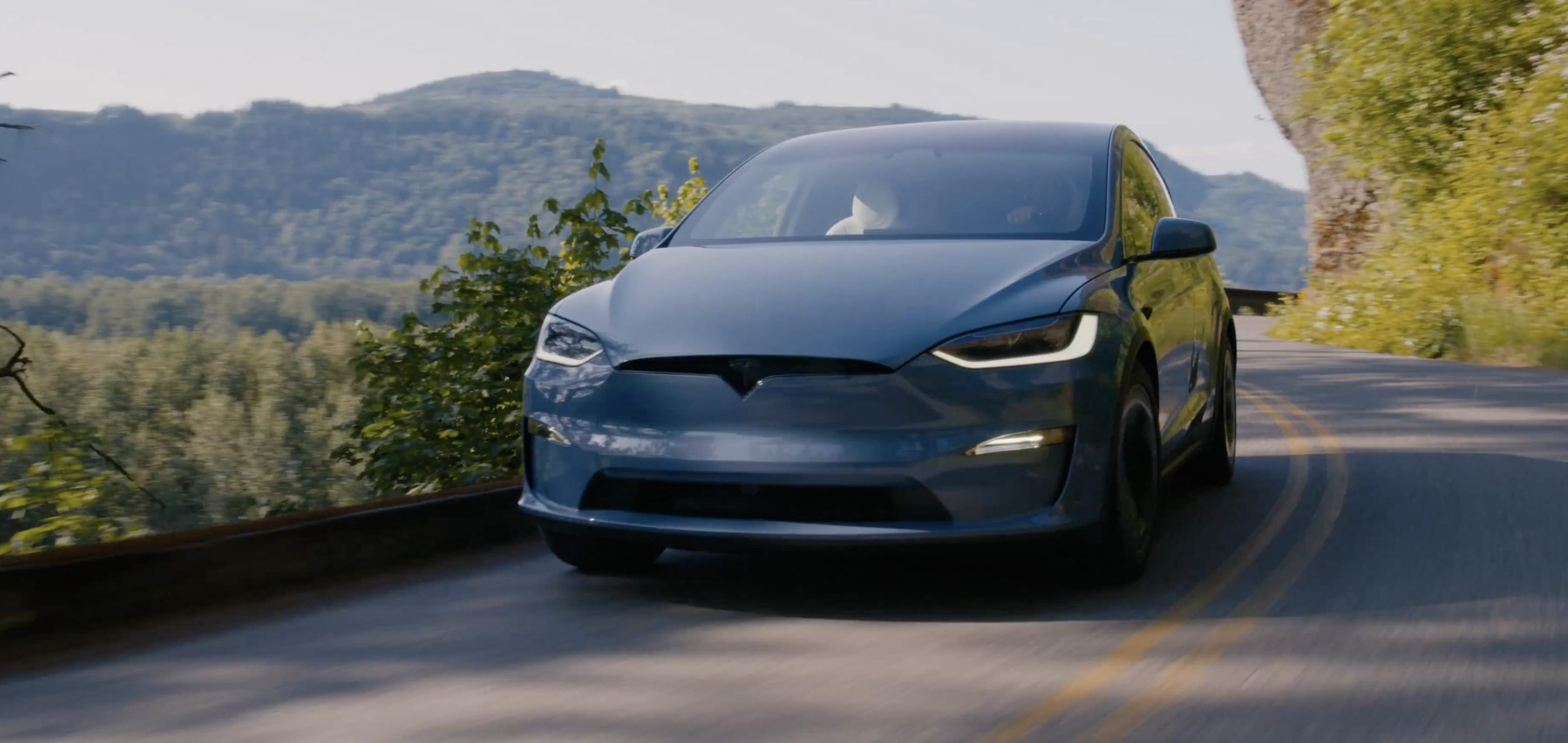
Some of the changes are familiar from the Model Y Refresh, which featured the quieter interior through acoustic-lined glass, a front fascia camera, new bushings, and suspension improvements for a smoother ride.
However, Tesla did refine the Model S Plaid’s exterior for “optimized high-speed stability.” You can see the difference between the two below:
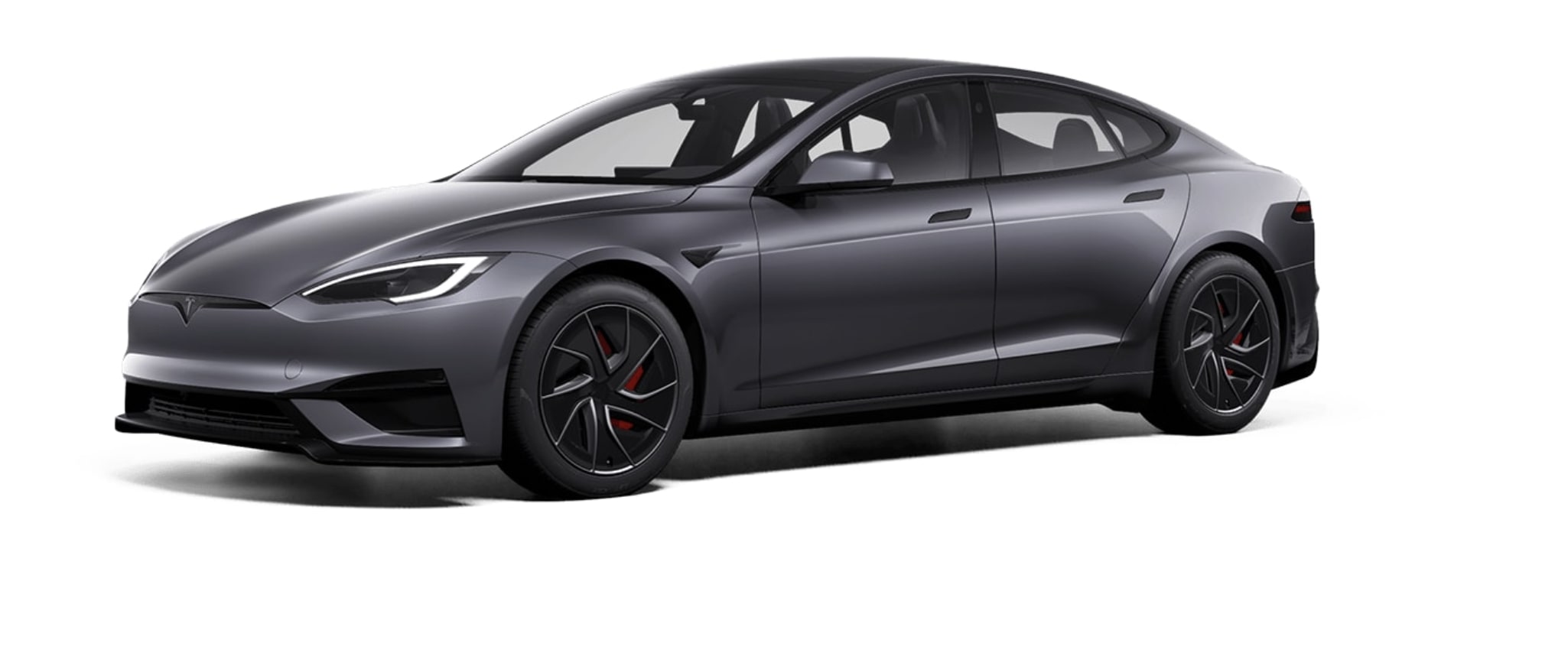

The front-end air diffusers are much deeper, and the front end is more boxy than the previous iteration of the Plaid Model S.
Here are some more images of the Model S that Tesla released in a teaser video:
- Credit: Tesla
Tesla sells such a low volume of the Model S and Model X that it was probably less than likely that the company would put endless manpower and effort into completely redesigning it. CEO Elon Musk said a few years ago that the two cars would only stay in production for “sentimental reasons.”
While they are very special to the Tesla family, they are not incredibly important to the mission of the company.
News
Tesla teases new color while testing refreshed Model S, X
Tesla teased a new color that could be coming to the United States with the new Model S and Model X.
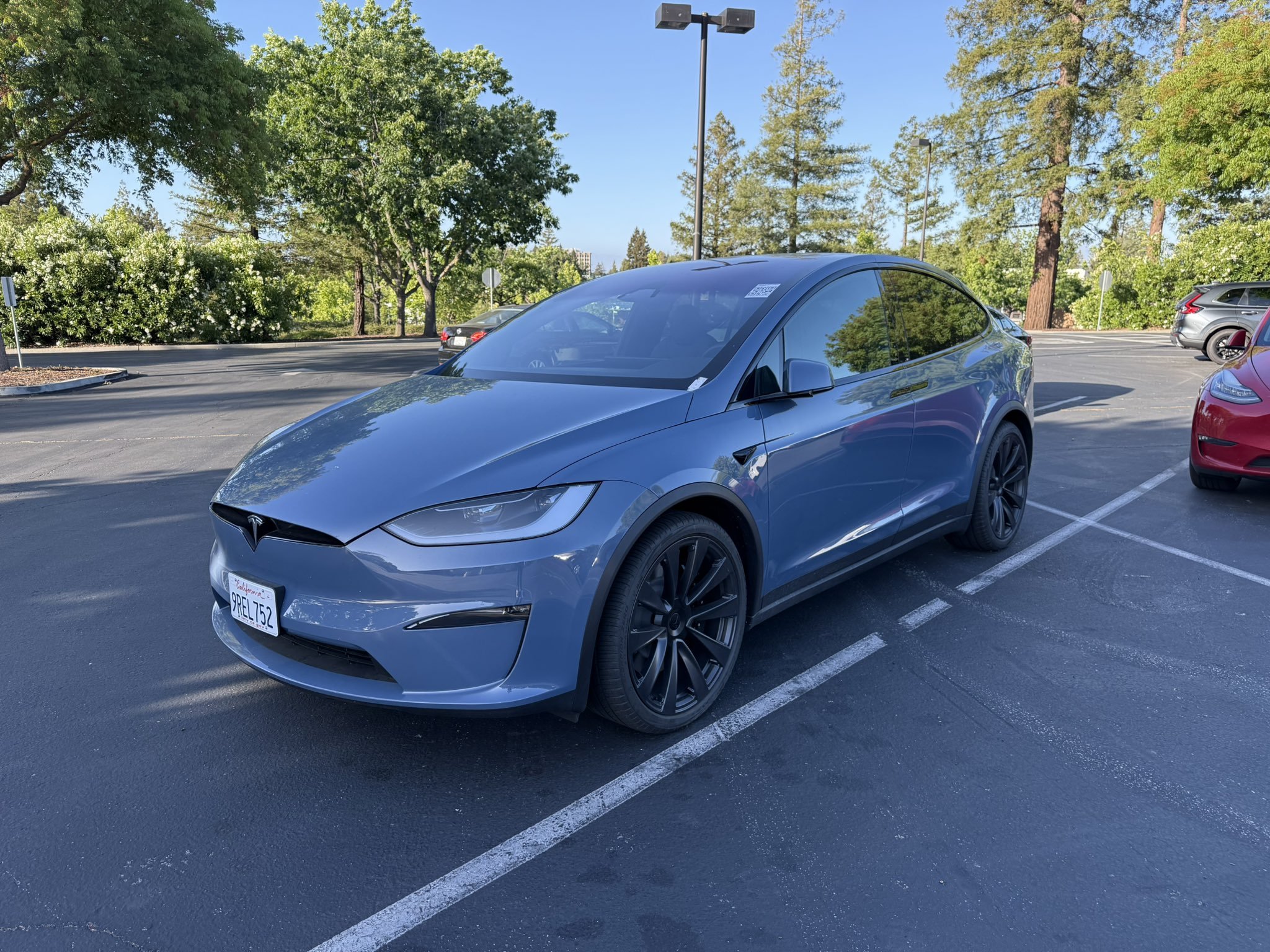
Tesla appears to be teasing a brand new color while it was testing the refreshed Model S and Model X, which was spotted last week in California.
Tesla currently offers six paint options in the United States, but they are all pretty basic. This has not been a problem for owners as wrapping the vehicles is a common practice, but some people would likely see more versatility from Tesla in terms of their standard paint colors.
This is especially relevant as Europe has been able to have both Midnight Cherry Red and Quicksilver, which were, at one time, exclusive to the market.
Quicksilver made its way to the United States, and Tesla did release a new Red last year with “Ultra Red,” but Midnight Cherry Red never made its way outside the walls of Gigafactory Berlin.
Last week, as the first spy images of the new Model S and Model X were taken and released by The Kilowatts, there was a very noticeable difference with the vehicle, as other changes seemed to be relatively underwhelming: a new paint color.
New factory blue, coming soon to a Model X near you pic.twitter.com/3CuN4j1ipq
— The Kilowatts 🚗⚡️ (@klwtts) May 22, 2025
Many believed this was simply a wrap, but Ryan Levenson of The Kilowatts, a former Tesla employee, dispelled that rumor after several questions about it.
He said that this is absolutely a factory paint color and not a wrap:
New color too! If you know what you’re looking for you know that this is factory paint and not a wrap. pic.twitter.com/jBYrimZIQT
— The Kilowatts 🚗⚡️ (@klwtts) May 22, 2025
More images were shared by @supergeek18 on X:
New paint color for Model S/X 🤩 pic.twitter.com/Pb27JruhXs
— Henry (@supergeek18) May 24, 2025
Tesla released a new color earlier this year, but it was just a revision to Black, now called “Diamond Black,” featuring speckles that give a reflection and refraction of light as a diamond would.
However, this new color is certainly quite different than anything Tesla has previously offered in the U.S. before. It is relatively similar to Glacier Blue, a color Tesla launched in Asia. Earlier this year, Franz von Holzhausen, Tesla’s Chief Designer, talked about bringing the color to the U.S.:
“Glacier Blue is just a color that we’ve been talking about with our team — the team is like right through that window by the way — and we were looking at the impact of silver, how do we get pigment into silver and really add a little bit of personality to it. If you look at our palette, you know it was either darks or white, and so we were looking for something in between. Blue is always a fairly popular color.”
It would be a refreshing addition to the options Tesla currently offers, and a breath of fresh air for those who have been wanting a different look altogether.
-

 Elon Musk1 week ago
Elon Musk1 week agoTesla investors will be shocked by Jim Cramer’s latest assessment
-

 Elon Musk3 days ago
Elon Musk3 days agoElon Musk confirms Grok 4 launch on July 9 with livestream event
-

 Elon Musk18 hours ago
Elon Musk18 hours agoxAI launches Grok 4 with new $300/month SuperGrok Heavy subscription
-

 News7 days ago
News7 days agoTesla Model 3 ranks as the safest new car in Europe for 2025, per Euro NCAP tests
-

 Elon Musk2 weeks ago
Elon Musk2 weeks agoA Tesla just delivered itself to a customer autonomously, Elon Musk confirms
-

 Elon Musk1 week ago
Elon Musk1 week agoxAI’s Memphis data center receives air permit despite community criticism
-

 Elon Musk2 weeks ago
Elon Musk2 weeks agoTesla’s Omead Afshar, known as Elon Musk’s right-hand man, leaves company: reports
-

 News2 weeks ago
News2 weeks agoXiaomi CEO congratulates Tesla on first FSD delivery: “We have to continue learning!”





